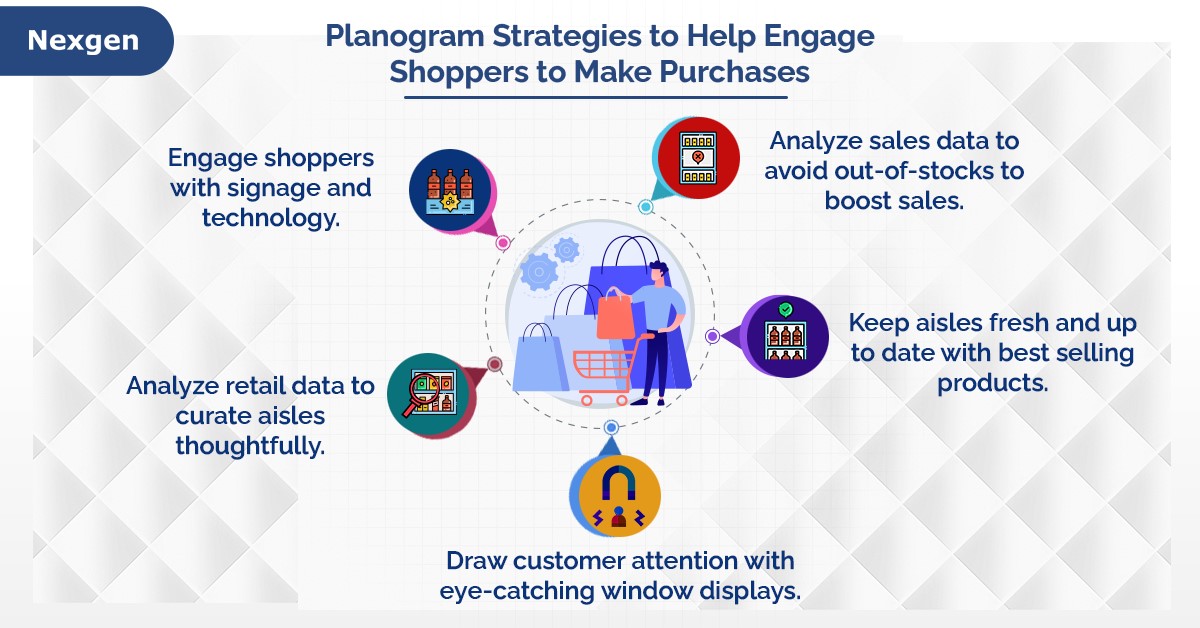Have you ever walked into a retail store and impulsively decided to buy their product? Accept it, we all fell for that spell. That is how visual merchandising can be compelling.
In retail marketing, visual merchandising planogram has an undeniable role in bringing people into your store – in other words, sales. Planograms are visual merchandising tools, which help retailers plan and execute their store shelves to drive customer attention and to boost sales. History proves the effectiveness of visual merchandising. Before, it only started with common goods. Shopkeepers displayed their products on tables in the streets to say they are open for business. From florists to tailors, they used their windows to display their products that would entice the shoppers into their stores. Florists would display their finest flowers on the windows and use the scent and colors of it to attract shoppers, whereas tailors would display their stitched clothes on their windows to drive customer attention. But with the advent of modern technology and fashion, visual merchandising has become more compelling and aesthetic, which changed the whole concept of sales. Successful visual merchandising can be designed if you analyze your sales data to understand your customer desires and determine if your present displays are affecting conversions. Following are some planogram techniques, that you can apply in your retail store to help engage shoppers to make purchases:

- Engage shoppers with signage and technology: Incorporating technology into your visual merchandising is a great way to increase interactivity of shoppers with the aisles to boost sales. For example, tablets in standing display can let shoppers interact with the screens and enable them to explore product details, learn ways to use a product, and point them to the right products to make purchases. Retailers can also get more creative with signage in their visual merchandising. This can easily draw shopper’s attention to the products. One way to do this is to include promotional activities like discount or offer labels, or strong call to action messages like ‘Try Me On’ or ‘Pick Me Up.’ This boost sales by increasing shopper’s curiosity and influencing their actions, inspiring them to interact with your store displays.
- Curate thoughtfully:The end goal of visual merchandising is not to fill shelves with more products. It is how thoughtful you are in displaying products on shelves. This is where retail data knowledge about your shoppers desires and lifestyle choices become important. Viewing your merchandising techniques from your shopper's perspective will allow you to come up with ideas for cross-merchandising or identifying products that could be sold as bundles and putting them together in a single display. Remember that customers today are already bombarded with so much information, and displaying more items could confuse them. Thus, making store displays less cluttered can aid customers decide what to purchase.
- Draw attention to your window display:A great window display acts as a magnet, which grabs the attention of people passing by and attracts traffic to your store. This will automatically help boost your sales. Retailers can use window displays to tell a specific story about their brand, product assortment, and give brief information of what in-store experiences await shoppers who venture inside. For that, you need to pick the key products that you want to feature in your displays, and make sure you place them at eye-level.
- Keep your aisles fresh:Have you ever noticed how stores divide their lengthy aisles with a center area to allow customers to move through a long line of merchandise? Create eye-catching displays in the center of your store's wide aisles. Utilize these areas to create interactive product displays so that customers may try things before buying them, or just to display well-curated sets of products.
- Get a look into your sales data: Analyzing your sales data is crucial since it reveals which product categories are bringing in the most revenue, which shelves need to be stocked, which shelves need to fill, and points out your most popular or best-selling items. This helps you feature those products more accurately on your store shelves. This helps you restock your store shelves before the product runs out of stock and boost sales.
Overview of Nexgen POG
Nexgen POG is a robust and user-friendly cloud-based visual merchandising tool. It is designed for quick and efficient planogramming with minimal effort. Planograms can be designed by easily dragging and dropping the products. The multi-device compatibility feature of POG allows you to obtain, share and edit planograms on any device, including your phone. It helps in designing store-specific planograms for increased product visibility and sales.
Get Your Free Trial Now!